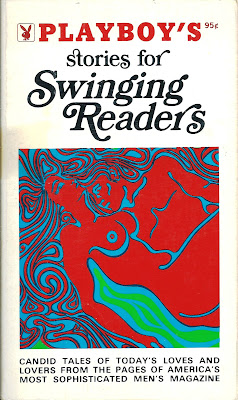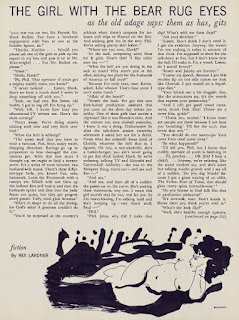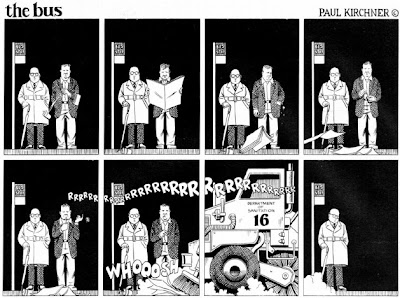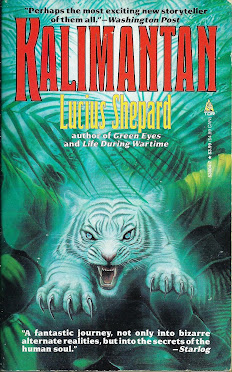October 2023 is Spooky StORIES MOnth
at the PORPOR BOOKS BLOG !
at the PORPOR BOOKS BLOG !
Book Review: 'Fears' edited by Charles L. Grant
Well, from 40 years ago, here we have a quintessential Paperbacks from Hell anthology: 'Fears' (280 pp.), published by Berkley Books in May, 1983.
This was one of four horror anthologies edited by Grant for Playboy Press and Berkley Books, the others being 'Nightmares' (1979), 'Horrors' (1981), and 'Terrors' (1982).
I previously have read 'Nightmares' and found it a decent collection of tales, less influenced in their selection by Grant for their 'quiet horror' qualities, than I would have expected. So I had expectations that 'Fears' would be a good anthology, too.
The stories in 'Fears' saw publication during the interval from 1972 to 1983 (presumably those written in 1983 were done exclusively for this anthology).
My capsule summaries of the contents:
Surrogate, by Janet Fox: Steve Winston and his wife Diane have hired a young woman to gestate their child. This may not be a good idea. A subtle, but effective, tale of suburban horror.
Coasting, by Chelsea Quinn Yarbro: strange doings at sea. There is much build-up in terms of atmosphere and setting, but the denouement is so contrived it reads as something from fanfic.
Spring-fingered Jack, by Susan Casper: nepotism is in effect, as Casper was Gardner Dozois's wife. This is a short-short story about a particularly disturbing video game.
Flash Point, by Gardner Dozois: this story first appeared in Damon Knight's 'Orbit 13' (1974). It's set in a near-future USA where, alarmingly, violent behavior is on the rise.
A Cold Day in the Mesozoic, by Jack Dann: Jody misses the school bus and on his long walk home, sees something perhaps he shouldn't have seen. A short-short tale, that fails to impress.
The Train, by William F. Nolan: practiced short-story hand Nolan gives us a well-plotted tale of a cold and wintry Montana night, and a train that you are better off not taking. Nolan later expanded this story into his 1991 novel 'Helltracks'.
The Dripping, by David Morrell: strange things are going on in a remote farmhouse. I suspect that most readers will guess the denouement quite early on in the story.
The Ragman, by Leslie Alan Horvitz: an affluent couple travel from their home in the Connecticut suburbs into New York City. Getting lost in the ghetto will have consequences.
Deathtracks, by Dennis Etchison: the obligatory Etchison entry. A young man is assigned to monitor the TV viewership of an elderly couple named Bob and Jenny Morrison. The television in the Morrison's living room makes strange noises and displays unusual lighting effects. This story is badly overwritten, and the horror / dark fantasy content unconvincing.
Father Dear, by Al Sarrantonio: the un-named, first-person narrator seeks revenge on his father for the infliction of all manner of cruelties during childhood. This story requires patience from the reader, as it take some time to unfold (and somehow the Greek goddess Artemis / Diana figures into the ending).
As Old As Sin, by Peter D. Pautz: some punk kids learn, the hard way, that tomenting little old lady Mother Corbin is a bad idea. Another of the better stories in the anthology.
Fish Night, by Joe R. Lansdale: in 1983, Lansdale was a little less notorious, and a little less transgressive, than he would be later in the decade. Perhaps that's why editor Grant, a staunch advocate for Quiet Horror (and a firm opponent of splatterpunk) published this tale, which is more fantasy that horror. It's about some can opener salesmen stranded in the Arizona desert.
Remembering Melody, by George R. R. Martin: Melody is one of those dissipated hippie chicks that comes into your life.............and doesn't leave.
The Pond, by Pat Cadigan: little kids should stay away from the pond at grandma's house. This story takes its time developing, but has a satisfying conclusion.
The Beasts That Perish, by R. Bretnor: you'll never look at roadkill the same way after reading this imaginative story, one of the better ones in the anthology.
Cassie, Waiting, by Julie Stevens: maybe the bag lady who mumbles to herself as she stands at the corner of Eighty-third and Lexington knows something you don't.
High Tide, by Leanne Frahm: this novelette, by Australian Frahm, is the best story in 'Fears'. It's about a camping / fishing trip to Newry Islands in the Seaforth Bay area of Queensland. Peter Cleaver, his son Mike, and Mike's friend Drip discover something alarming in the mangrove swamps. 'High Tide' presents its eco-horror theme with skill and suspense.
Summing up, I am comfortable with giving 'Fear' a 4-Star Rating. The inclusion of the stories from Fox, Nolan, Pautz, Martin, Bretnor, and Frahm gives it an impact that tended to be lacking in more than a few anthologies released in the early days of the Paperbacks from Hell.





















































